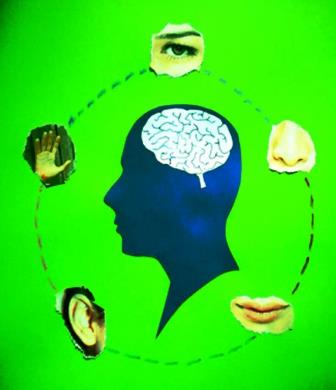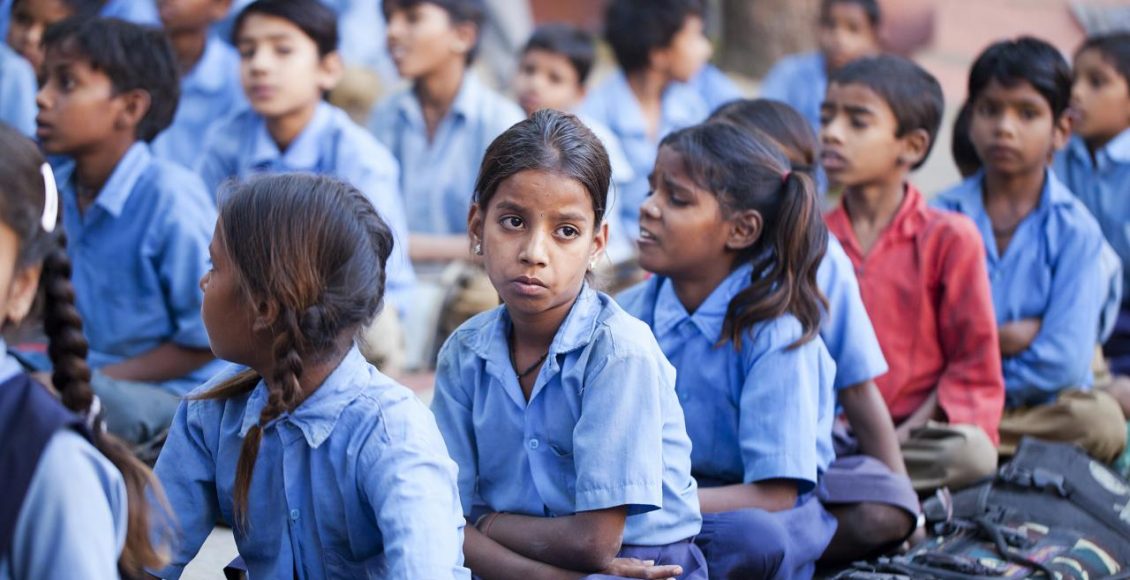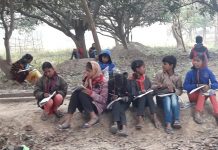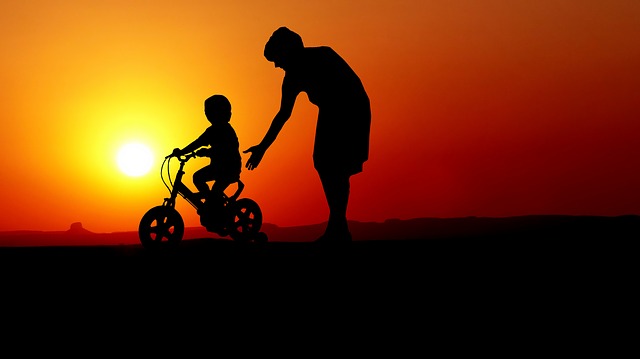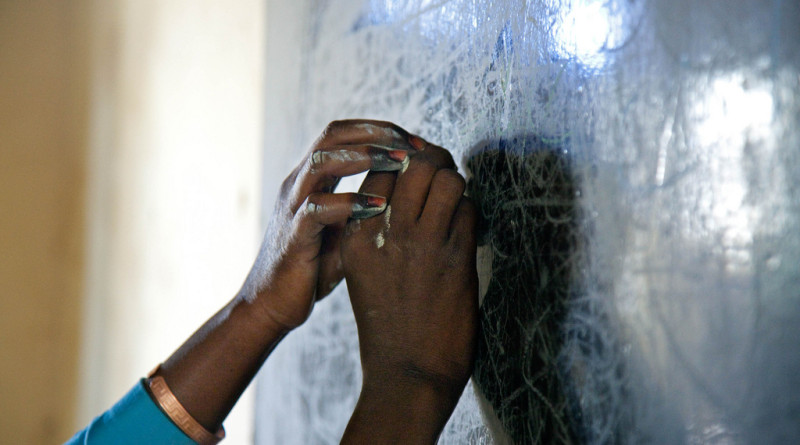FROM THE TEACHER’S PODIUM
Growing urbanization and fascination with gadgets has often ended up robbing children of the time and space to discover and relate to the natural world around them, this not only deprives them of the sheer happiness of unwinding in natural abundance but also weakens their artistic/emotive faculties. The article that follows shares some creative insights as to how pedagogues can bring young learners closer to nature through simple yet meaningful activities.
Arvind Dhondphale is an educator at The Peepal Grove School,Chittoor.
In modern times, we keep forgetting ‘NATURE’, our biggest teacher. Aesthetics is one of the things humans have learnt from nature. If one becomes sensitive towards nature one can easily learn and experience harmony, and therefore beauty in everything around themselves. It helps us to live a peaceful, sensible and beautiful life. But to be in harmony with the world around us, one has to develop harmony in the senses. We are part and parcel of a beautiful world around us. This makes one think: while this world is so wonderful, it is up to us how we see it, and what our approach towards it is. If we depend only on physical experiences, then we limit ourselves and also our actual potential. We are gifted with various senses and with the help of these senses we can experience the world in a holistic manner. These experiences also depend upon how sensitive we are or how sensitive our senses are. The world around us can be experienced at different levels. I’m always amazed at the world and with life. I keep thinking whether experiences can be shared as experiences and not merely structured sentences? Can they be shared without losing their individual essence? Can it become a deep individual experience? Can exercises be developed which can lead to a deeper experience of the world? Here, I feel that there is a connection between this intense sensitivity to nature and a meditative state of mind. Aiming for this will make our approach to learning deeper.

I have a couple of ideas which one can serve as exercises to expand our perception of the world in which we live. When we look at nature generally we get carried away by only its physical beauty. But if we try to go deeper, as in the case of a tree, we can see that there is a certain order in the arrangement of petals in flowers, arrangements of leaves, formation of branches and roots etc. It not only has beauty but also harmony. There is harmony in almost everything. And that harmony can be sensed, can be realized and also can be learnt. We all have our own perspectives and perceptions regarding the world around us. They vary from person to person. I think if the exercises are designed or planned with this understanding then each individual’s way of learning will not be disturbed. And it will also help them discover their own selves in a better way. When I looked at the results of these exercises, they gave me the confidence that it was possible. How do we learn? The process of learning is a very individualistic and unique experience for every learner. It depends on the atmosphere around the learner and the opportunities provided for learning to take place. Does the learner get the kind of space to learn in his own way? As human beings use their eyes 70 to 80 per cent more than other senses to know the world, the other senses are underutilized. Let me share an exercise I conducted with students to find out if it was possible to make them use other senses too to know the world. This is one of the exercises which are trials for possibilities; possibilities for individual experiences. They may lead to individual levels of perceptions. The objective of these exercises is to help them (young learners) develop an aesthetic sense.

Feeling/Sensing the ‘Tree’ by hugging, touching with closed eyes, smelling and listening to the sounds of leaves or branches moving and then expressing it with the help of drawing, painting or writing. I conducted the exercise with students of Grades IV to VII i.e. roughly the age group of 10-12 years. Our school is situated in a beautiful valley and it has numerous trees in the campus. Students come from different parts of the country and from different backgrounds. Most of them are overwhelmed by the charm of city life. It is not easy to draw them out of that
mindset and bring them close to nature. I conducted the exercise class wise. I made each student sit and asked them to do a deep breathing exercise. It helps in focusing the mind. Then they selected a tree of their choice. I asked them to close their eyes and to do deep breathing once again; it helped them to connect with the tree better and to focus on the process of feeling the tree in depth. They started touching the tree trunks, the branches and the leaves with their hands. At the same time they also smelled the tree trunks, the branches and the leaves. I also asked them to try and focus on listening to the sounds around the tree like the breeze, the birds and the rustling of the leaves. With their hands they felt the texture, the shape and the size of the trunks, branches or the shape and size of leaves. This went on for some time till they stopped one by one. Then I asked them to talk about their experiences and what they felt.
They could then express themselves in the form of a poem, drawing or painting. I conducted the exercise with students of Grades IV to VII i.e. roughly the age group of 10-12 years. Our school is situated in a beautiful valley and it has numerous trees in the campus. Students come from different parts of the country and from different backgrounds. Most of them are overwhelmed by the charm of city life. It is not easy to draw them out of that mindset and bring them close to nature. I conducted the exercise class wise. I made each student sit and asked them to do a deep breathing exercise. It helps in focusing the mind. Then they selected a tree of their choice. I asked them to close their eyes and to do deep breathing once again; it helped them to connect with the tree better and to focus on the process of feeling the tree in depth. They started touching the tree trunks, the branches and the leaves with their hands. At the same time they also smelled the tree trunks, the branches and the leaves. I also asked them to try and focus on listening to the sounds around the tree like the breeze, the birds and the rustling of the leaves. With their hands they felt the texture, the shape and the size of the trunks, branches or the shape and size of leaves. This went on for some time till they stopped one by one. Then I asked them to talk about their experiences and what they felt. They could then express themselves in the form of a poem, drawing or painting.
When the lesson got over I realized that it had helped not only to calm them down but also helped to calm me down from within. I have seen that it becomes an experience of discovery. J. Krishnamurti says, ‛Discovery is the beginning of creativeness. Creative happiness comes only when there is inward richness and not by any system.‛ Rabindranath Tagore used to spend time early in the morning sitting in a chair on his house-boat, just to see the changes in Nature. When the night ends and it dawns and when the light starts entering in the life of the early morning it is indeed a moment worth witnessing. A tree can become a very close and true friend. If we are able to feel its feelings, the tree also can feel ours. It is so interesting to see the same tree in different seasons, not only with the physical eyes but by pouring our heart and feelings into it. The world looks different to different eyes.
The perspective of seeing the world makes a huge difference. Are we able to sense our own body? For instance, when the weather is hot outside and we are entering in a room. It’s really hot. What do we immediately do? Switch on the fan. Why? Why don’t we have the patience to observe with awareness, what happens to the body? Sit down and watch the body. What happens next is a phenomenon. Sweat drops starts coming out of the skin pores. How does it happen? Isn’t it a miracle of nature taking place in our body? As I mentioned earlier, these kids come to school with a typical urban mindset. Most of them are surrounded by ultra-modern digital gadgets, latest vehicles, easily available luxuries etc. I felt that they should be given a chance to know or to realize that there is a sky full of stars up there, that there is sun, there is a moon, there are beautiful clouds, the air, there are mornings with the chirping of the birds, there are evenings with a colorful sky, flowing lively rivers etc. In short they should be given a chance to know that there is a live thing called nature around them and that we all are part and parcel of it. We are surrounded by beauty which can be responded to. The exercises I shared here give me the confidence that the use of all the senses can be nurtured. I feel that this is just a beginning. It needs to be taken even further, as there are unlimited possibilities that lie ahead. The point however is to collectively take the first step in this direction.
This article is published in The New Leam, SEPTEMBER 2017 Issue( Vol .3 No.27 – 28) and available in print version. To buy contact us or write at thenewleam@gmail.com

